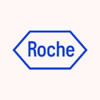
Clinical Trial of Patidegib Gel 2%, 4%, and Vehicle Applied Once or Twice Daily to Decrease the...
Basal Cell CarcinomasThis is a double-blind, dose escalating, randomized, vehicle-controlled study designed to compare the efficacy and safety of patidegib gel 2% and 4% applied once or twice daily in comparison with that of vehicle in patients with Basal Cell Carcinoma. One investigational center (metasite) in the United States will participate in this study. Approximately 36 subjects who meet the study entry criteria will be enrolled into one of four sequential cohorts. Within each cohort subjects will be randomized in a 2:1 ratio to receive active or vehicle gel.

Study Evaluating the Interest of Vismodegib as Neo-adjuvant Treatment of Basal Cell Carcinoma (BCC)...
Basal Cell CarcinomaOpen-label, non-comparative, multicenter, phase II study of Vismodegib in patients with locally advanced BCC.

Intraoperative Assessment of Surgical Margins Using Confocal Microscopy in Comparison With Reference...
Squamous Cell Carcinoma of Head and NeckBasal Cell Carcinoma of SkinStudy to evaluate the use of confocal microscopy for detecting resection margins in patients undergoing surgery for basal cell carcinoma of skin and squamous Cell Carcinoma of Head and Neck

Fractional CO2 Laser Assisted Photodynamic Therapy
Actinic KeratosisBasal Cell CarcinomaNodular Basal Cell Carcinomas: Compare the efficacy and safety of conventional versus fractional laser assisted PDT for difficult to treat nodular cell carcinomas in the face. Actinic keratosis: Compare the efficacy and safety of conventional versus fractional laser assisted PDT for moderate to severe actinic keratoses located in the face and on the hands.

STEVIE: A Study of Vismodegib in Patients With Locally Advanced or Metastatic Basal Cell Carcinoma...
Basal Cell CarcinomaThis single-arm, open-label, multi-center study will evaluate the safety and efficacy of vismodegib (GDC-0449) in patients with locally advanced or metastatic basal cell carcinoma. Patients will receive oral doses of vismodegib 150 mg once daily until disease progression or unacceptable toxicity.

Pilot Biomarker Trial to Evaluate the Efficacy of Itraconazole in Patients w/ Basal Cell Carcinomas...
Basal Cell Carcinoma (BCC)Skin CancerBasal cell carcinomas (BCCs) are the most common human cancer in the US and affect over 1 million people. There is no effective drug to prevent basal cell carcinomas of the skin. We hope to learn if an oral anti-fungal drug, itraconazole, might inhibit a marker of proliferation and a biomarker (tumor signaling pathway) of BCC development. Itraconazole is an FDA-approved drug for the treatment of fungal infections of the skin, and has been used for the past 25 years with relatively few side effects. It has been shown in mice to reduce a BCC biomarker and to reduce growth of BCCs. Thus, it may reduce BCC growth in humans.

A Phase 1 Study of BMS-833923 (XL139) in Subjects With Advanced or Metastatic Cancer
Hedgehog PathwaySmoothened2 moreThe purpose of this study is to determine the safety of BMS-833923 (XL139) in patients with advanced or metastatic cancers and determine the recommended phase 2 dose range and schedule

PDT With Metvix 160 mg/g Cream Versus PDT With Placebo Cream in Patients With Primary Nodular Basal...
Basal Cell CarcinomaPhotodynamic therapy (PDT) is the selective destruction of abnormal cells through light activation of a photosensitiser in the presence of oxygen. These cells accumulate more photosensitiser than normal cells. The photosensitiser generates reactive oxygen species upon illumination. For skin diseases, there has been an increasing interest in using precursors of the endogenous photosensitiser protoporphyrin IX (PpIX). The most commonly used precursors have been 5-aminolevulinic acid (ALA) and its derivatives. The present test drug, Metvix®, contains the methyl ester of ALA, which penetrates the lesions well and shows high lesion selectivity . In vitro studies of animal and human tissues have shown significant intracellular formation of photoactive porphyrins after addition of Metvix®. The increased levels of photoactive porphyrins induced cytotoxic effects in tumour cells after photoactivation. The primary objective is to compare PDT with Metvix® cream to PDT with placebo cream in terms of patient complete response rates based on histologically verified disappearance of the lesions at 6 months after last treatment cycle. Secondary objectives are to compare the two treatments in terms of histological and clinical mean patient response weighted by the number of lesions within a patient, lesion response rates across patients, clinical complete patient response, cosmetic outcome and adverse events.

Treatment of Nodular Basal Cell Carcinoma (BCC) With Imiquimod 5% Cream After Curettage
Basal Cell CarcinomaTo assess the efficacy of treating a nodular basal cell carcinoma with imiquimod cream after initial treatment with curettage

Neoadjuvant Vismodegib in Patients With Large and/or Recurrent Resectable Basal Cell Carcinoma
Basal Cell CarcinomaIn this study patients with resectable basal cell carcinoma (BCC) who usually undergo surgery without prior anticancer treatment will be treated with antitumor medication. But since BCC is mainly localized in clearly visible regions of the body, as e.g. the face, there is also a need to reduce scars as a consequence of surgery which will be accomplished by neoadjuvant therapy. The used medication - vismodegib - displays controllable adverse events and shows a good efficacy for reduction of BCC lesions. It is expected that the neoadjuvant setting will lead to minor surgical intervention thus minimising surgical risks and scars for the patients.
